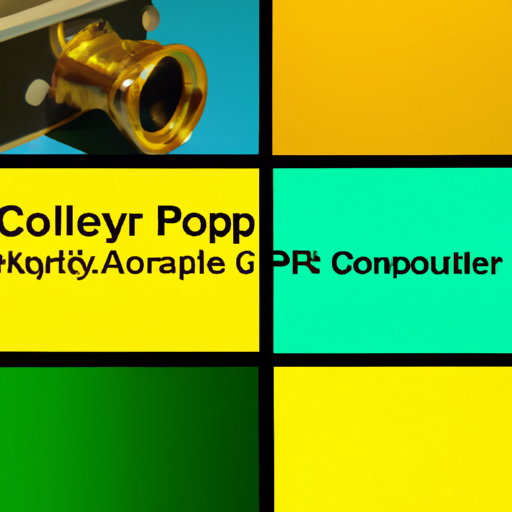
-
Table of Contents
Kyle Cooper: The Mastermind Behind Iconic Movie Title Sequences

When it comes to movie title sequences, one name stands out among the rest: Kyle Cooper. With his innovative and visually stunning designs, Cooper has revolutionized the way we experience the opening moments of a film. From his groundbreaking work on “Se7en” to his collaborations with renowned directors like Steven Spielberg and David Fincher, Cooper has left an indelible mark on the world of cinema. In this article, we will explore the life and career of Kyle Cooper, his contributions to the art of title sequences, and the impact he has had on the film industry.
Early Life and Education
Kyle Cooper was born on April 13, 1962, in Salem, Massachusetts. From a young age, he showed a keen interest in art and design, often spending hours sketching and experimenting with different visual techniques. Cooper’s passion for film was ignited when he saw Alfred Hitchcock’s “Vertigo” at the age of 12. The film’s iconic title sequence, designed by Saul Bass, left a lasting impression on him and inspired him to pursue a career in the field.
Cooper attended the Rhode Island School of Design (RISD), where he studied graphic design and film. During his time at RISD, he honed his skills in typography, animation, and visual storytelling. His professors recognized his talent and encouraged him to explore the possibilities of combining his love for design with his passion for film.
The Birth of Prologue Films
After graduating from RISD, Cooper moved to Los Angeles to pursue his dream of working in the film industry. In 1990, he co-founded the design studio Imaginary Forces, which quickly gained recognition for its innovative title sequences and visual effects. Cooper’s unique approach to storytelling through design caught the attention of Hollywood filmmakers, and he soon became one of the most sought-after title sequence designers in the industry.
In 2003, Cooper left Imaginary Forces and founded his own design studio, Prologue Films. With Prologue, he continued to push the boundaries of title sequence design, creating memorable and visually striking openings for films such as “Spider-Man,” “Iron Man,” and “Dawn of the Planet of the Apes.” His work on “Se7en” remains one of his most iconic and influential projects, setting a new standard for title sequences and inspiring countless designers and filmmakers.
Innovative Techniques and Collaborations
What sets Kyle Cooper apart from other title sequence designers is his willingness to experiment with new techniques and his ability to collaborate effectively with directors and cinematographers. He understands that the title sequence is not just a visual introduction to the film but an integral part of the storytelling process.
One of Cooper’s most notable collaborations was with director David Fincher. Their partnership began with “Se7en,” where Cooper’s dark and gritty title sequence perfectly set the tone for the film. They continued to work together on films like “Fight Club” and “The Girl with the Dragon Tattoo,” with each title sequence reflecting the unique visual style and themes of the respective films.
Cooper’s collaboration with Steven Spielberg on “Catch Me If You Can” is another example of his ability to adapt his style to suit the director’s vision. The title sequence, inspired by the work of Saul Bass, captures the playful and nostalgic tone of the film, transporting the audience back to the 1960s.
The Impact on the Film Industry
Kyle Cooper’s innovative approach to title sequence design has had a profound impact on the film industry. His work has elevated the opening moments of a film from a mere formality to an art form in itself. Directors and studios now recognize the importance of a captivating title sequence in setting the mood, establishing the film’s visual identity, and engaging the audience from the very beginning.
Cooper’s influence can be seen in the work of countless designers and filmmakers who have been inspired by his groundbreaking techniques. His use of typography, motion graphics, and visual storytelling has become a staple in the industry, with many attempting to replicate his style but failing to capture the same level of creativity and impact.
The Future of Title Sequences
As technology continues to advance and storytelling evolves, the role of the title sequence is also changing. With the rise of streaming platforms and binge-watching culture, some argue that the traditional title sequence is becoming obsolete. However, Kyle Cooper believes that there will always be a place for well-crafted and thoughtfully designed openings in film and television.
In recent years, Cooper has expanded his work beyond film and into other mediums, including video games and virtual reality experiences. He continues to push the boundaries of design and storytelling, embracing new technologies and finding innovative ways to captivate audiences.
Conclusion
Kyle Cooper’s contributions to the art of title sequences have forever changed the way we experience the opening moments of a film. His innovative designs, collaborations with renowned directors, and willingness to experiment with new techniques have set a new standard for title sequence design. Cooper’s impact on the film industry is undeniable, and his work will continue to inspire and influence future generations of designers and filmmakers.
